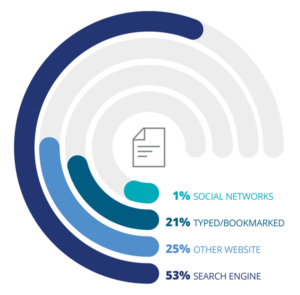A good lead gen site presents conversion opportunities to qualified leads at every stage of the buyer’s journey. It also has a marketing and sales enablement strategy in place to nurture these leads.
Show pictures of your team, especially the faces of key leadership. Visitors want to know who they are dealing with. Learn more by clicking here at https://www.rankboss.com/.

A good lead-gen website will focus on converting visitors into leads, rather than just designing a beautiful and intuitive interface. In addition to offering a great user experience, it should be easy to use and free from technical issues. A good way to test the usability of your site is to go through it as if you were a visitor. Then ask someone who is less tech-savvy to try it out and write down any challenges they encounter. You should also make sure that your site is responsive and secure. This is an important step in ensuring that your website can be used on any device. Many Internet browsers now warn users if a website is not secure, which can turn them away from your business.
The best lead gen sites are those that identify the problems their target audience is facing and offer solutions. This will attract potential customers and help you increase your conversion rate. In addition, it is essential to analyze the demographics of your targeted audience to ensure that your content addresses their needs and interests.
In the e-commerce world, there is one who has one of the most effective lead-generation websites. The company’s homepage features a feed of social media images from satisfied customers, showing their homes and pets using robots. It is a great way to build trust and show customers that they are getting value for their money.
Similarly, a company has an excellent lead-generation website. While it does not provide financial advice, the website offers unbiased reviews of popular consumer products and services. The site also offers a rewards program to encourage its visitors to return.
Another way to generate leads is to create a landing page that offers an incentive in exchange for an email address. This type of offer is especially effective when the customer is looking for a specific service or product. For example, a fitness program can offer a discount for new members in exchange for their contact information.
A good way to generate leads is to add a calendar tool to your website. This will allow your prospects to easily schedule a meeting with you. It can also save you time and energy by eliminating the back-and-forth emails between you and the prospect.
A lead gen website that is responsive across all devices helps you generate leads even when a potential customer is on the go. For example, if a visitor sees your contact information and phone number on a mobile device but doesn’t have time to fill out a form, they might call you instead. Make sure your phone number is prominently displayed on every page of your website. In addition, consider including a call-to-action (CTA) that allows visitors to reach out to you immediately.
Invest in the best-performing channels. While your website is essential to generating leads, you should also focus on other online marketing channels. For instance, your social media and email campaigns can help you generate more leads. Having a consistent brand voice and message will increase your chances of success with these channels.
Prioritize site and page speed. Nothing frustrates users more than slow-loading websites. 53% of people will leave a website that doesn’t load in three seconds or less. Make this a priority during development, maintenance, and updates.
Capture leads in the right stages of the buyer’s journey. It’s important to capture leads in all stages of the buyer’s journey, from awareness to consideration to action. To do this, you need to have conversion opportunities that cater to each stage of the journey. For example, if you are a home renovation company, consider providing a call-to-action that asks for a name and phone number or a contact form that requires more details about the project.
Use testimonials, case studies, and video testimonials to build trust with your customers. These can be powerful tools to convince potential buyers that your services are worth their investment. Incorporate them in the appropriate sections of your website to boost your conversion rates.
The key to generating leads is to build trust. This can be done by highlighting your industry expertise and creating an informative blog. It’s also a good idea to incorporate a call-to-action that is specific to your target audience and offers something valuable in exchange for their contact information. For example, you can offer a free consultation or a discount on your services to encourage them to respond.
A well-designed pop-up can help your website visitors find the information they need, increase conversions, and boost your bottom line. However, a poorly designed one can go unnoticed or even drive visitors away. To maximize the effectiveness of your pop-ups, consider using a few best practices for lead generation websites.
For example, you can use a full-screen takeover pop-up to promote your brand’s products or services. This type of pop-up is effective because it focuses on the user’s intent and provides a clear call to action. It also provides a high-value offer that is hard to refuse.
Another good example of a lead-gen pop-up is asking for an email address to receive more information about your product or service. This type of pop-up is often found at the top or bottom of a web page and can be used to capture leads from your current audience or new ones. It should be easy to close and not obstruct the visitor’s experience on your site.
Using a real headshot of the author can make your pop-up look more credible and trustworthy. For example, this beauty blogger uses her photo to reinforce her claim as a hair care expert. This simple trick is a great way to convince visitors that her advice works.
The timing of your lead-gen pop-ups is crucial. Showing them too soon may distract users and reduce their conversion rates, while showing them too late may cause them to lose interest. This is why it’s important to test your pop-ups on different devices and browsers.
Pop-ups should be easy to use, especially on mobile devices. No one wants to fill out a 12-field form on their phone, so your forms should be short and simple. It’s also helpful to have a tool like the Hemingway App available when writing your copy, which can ensure that it’s readable and conversational.
Gated content is a type of marketing strategy that requires potential customers to provide their name, email address, and other information to gain access. The purpose of this approach is to collect lead data and nurture those leads through the sales process. It can also help your brand become more authoritative and trusted by those who have invested their time to download the content. There are many ways to use gated content, but it is important to keep in mind that it should not be used as a substitute for organic traffic or paid advertising.
For example, if you are offering a 30-day ab challenge, gating your PDF calendar may be a good idea. This will allow you to track who completed the challenge, and it can be a great way to generate leads. However, if you’re using gated content as a conversion tool, it’s important to consider whether the content is worth the effort and the cost of collecting contact information.
One of the most common ways to use gated content is to offer a free trial of your product. This is particularly effective for complex products, where potential buyers need to spend some time with the software to determine if it meets their needs. The key to a successful free trial is providing value for the user while not putting too much pressure on them.
Another common use of gated content is to offer a white paper, research report, or ebook. These resources are typically longer-form and more informative, and they require visitors to provide their contact information to access them. This type of content is often gated because it provides substantial value to the audience, and it can be a great way for brands to nurture their prospects through the sales process.
Lastly, marketers can also use gated content to create a private community. This can be done by offering exclusive articles, videos, or course materials to interested users. This can be a powerful way to generate high-quality leads, but it can also be time-consuming and costly to maintain.

